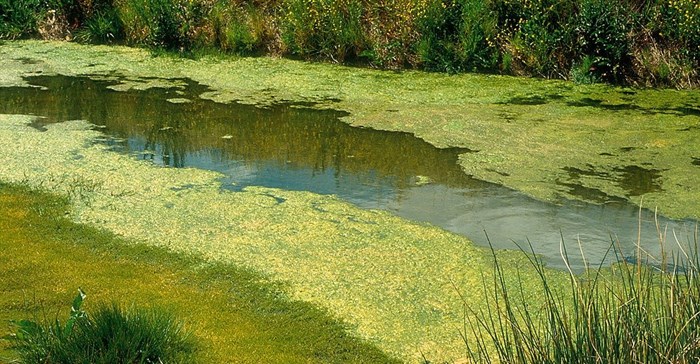
Related
Top stories






LegalKenyan court postpones case seeking to halt Diageo's $2.3bn sale of EABL
Duncan Miriri and Emma Rumney 1 day
More news












Taking into account typical irrigation maintenance protocol as well as the costs of labour and other consumables in a low and high algae load scenario, CSIR resource economist, Dr Willem de Lange arrived at an estimated R1,887.92 per hectare per year as the cost of eutrophication. The figure also includes a “management budget” for filamentous green algae mitigation strategies specific to the area.
He explains that this figure enables the calculation of a reserve price for filamentous green algae pollution permits, which is estimated at between R2.25 and R111.00 per gram of filamentous green algae.
Algae is a water-based plant, attaching itself to rocks and other plants. Nutrient enrichment from raw or partially treated sewage, agricultural effluent and other forms of phosphorus-rich pollutants stimulates the growth of filamentous algae. This, in turn, clogs farmers’ irrigation systems.
The standard practice to manage the impacts of filamentous algae is frequent cleaning of irrigation systems, and this provided the basis to establish a cost estimate on the impact of algae. “Farmers were aware of the algae problem but did not know how big the problem was and how it affect their pockets,” Says De Lange.
Commercial agriculture in the Dwars River is dominated by deciduous fruit and viticulture with plums being grown on 70% of the area. As such, de Lange used plums as a representative deciduous fruit crop in his study.
Approximately 307 hectares in the study area are dedicated to deciduous fruit, and assuming that all farmers are faced with the challenge of filamentous algae, the deduced R1,887.92 per hectare per year translates to R579,591.44 per year for deciduous fruit in the area - enough to establish 10 hectares of plums.
Tradable permits seek to limit pollution at an optimal cost to the polluter and create an incentive for companies to reduce pollution further, relative to their entitlement, since it is possible to sell the difference to willing buyers.
“Pollution in effect becomes a tradable commodity. This mechanism uses the marketplace to distribute pollution impacts more evenly to support the self-cleansing capability of rivers. The permit is not a system to make the problem go away but is a tool to avoid extreme events,” says De Lange.
The study was published in the Journal of Environmental Management.